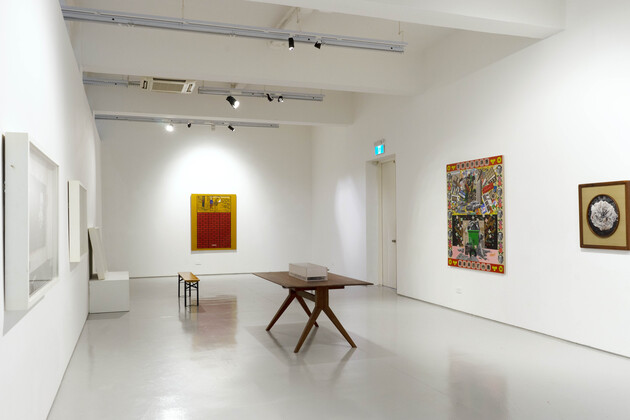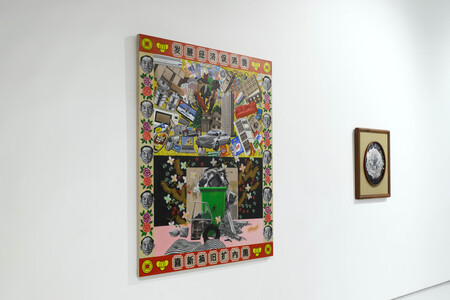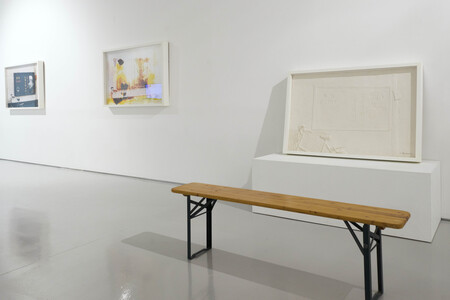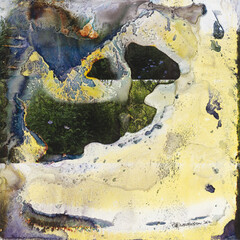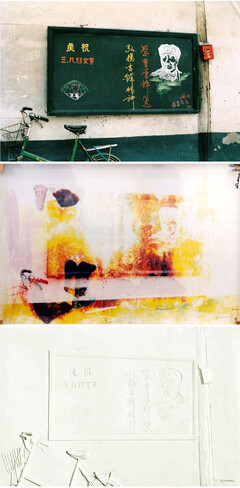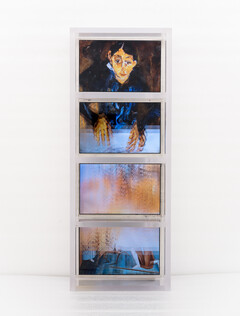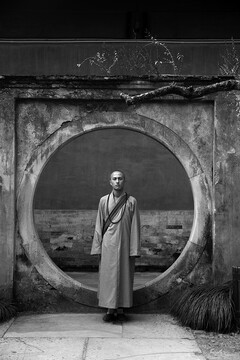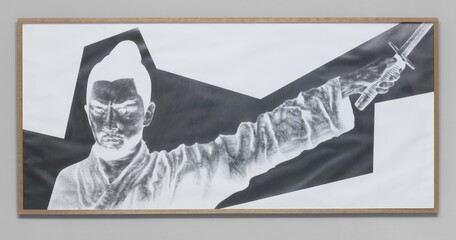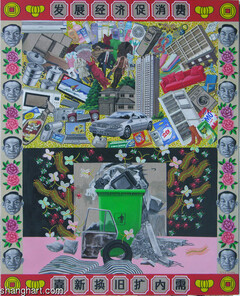Group Exhibition ShanghART Singapore, Singapore
What should we do with traditional maxims? Like those engraved on the wall in WEI Guangqing's paintings from Zhu Zi's Family Maxim and The Virtuous Words.
What else can we do with advertising and propaganda hoardings? Like the ones featuring the portrait of the young Chinese Communist hero Lei Fang captured by WANG Youshen?
Should these inscriptions be respected? Should they be bypassed? Or, more radically, be ignored?
Does the passage of time choose for us? Erasing what were once social assumptions and gradually breaking free of the rules.
Or are we at the origin of these mutations?
Be that as it may, the works of art on display reflect both the past and the present, like an indelible link between the two eras.
WEI Guangqing inscribes on the red wall traditional maxims to which we are supposed to refer, while WANG Youshen carries out a sort of facade restoration by ‘washing’ his photographs. However, if we observe the work closely, we realise that this process merely amplifies what has been written on the wall, inscribing it definitively in society, unless the façades themselves are covered with another sign.
It uses the artistic technique of the Birdhead duo, who subtly use collage and photographic montage to depict an eminently contemporary world, sometimes urban, sometimes rural. A floral interlude that embraces and contrasts with our current consumer society, represented by JI Wenyu, where waste and accumulation go hand in hand. An outrageous age, but one in which we can take pride in the digital and technological advances exploited by Hu Jieming, who retraces 100 years of art history in one-minute videos.
Curated by Zélie Chabert and put together with the help of Tian Lim and Joshua Kon.
This is the third exhibition under My boss told me to not do exhibitions.
More Pictures:

